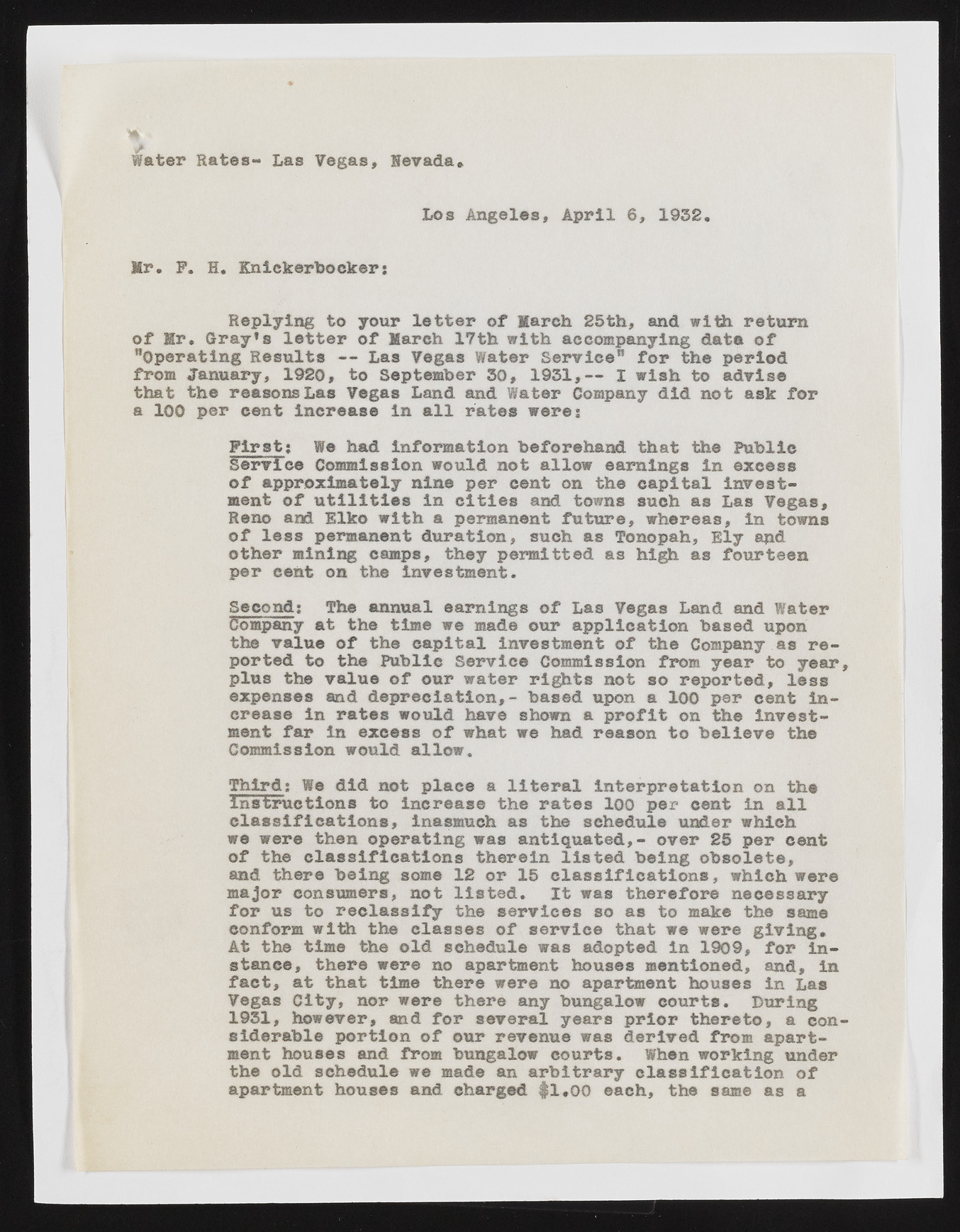Copyright & Fair-use Agreement
UNLV Special Collections provides copies of materials to facilitate private study, scholarship, or research. Material not in the public domain may be used according to fair use of copyrighted materials as defined by copyright law. Please cite us.
Please note that UNLV may not own the copyright to these materials and cannot provide permission to publish or distribute materials when UNLV is not the copyright holder. The user is solely responsible for determining the copyright status of materials and obtaining permission to use material from the copyright holder and for determining whether any permissions relating to any other rights are necessary for the intended use, and for obtaining all required permissions beyond that allowed by fair use.
Read more about our reproduction and use policy.
I agree.Information
Digital ID
Permalink
Details
More Info
Rights
Digital Provenance
Publisher
Transcription
Water Rates- Las Vegas, Hevada. Los Angeles, April 6, 1932, Mr. P. H. Knickerbocker: Replying to your letter of March 25th, and with return of Mr. Cray’s letter of Mareh 17th with accompanying data of "Operating Results — Las Vegas Water Service" for the period from January, 1920, to September 50, 1931,— I wish to advise that the reasons Las Vegas Land and Water Company did not ask for a 100 per eent increase in all rates were: First: We had information beforehand that the Public Service Commission would not allow earnings in excess of approximately nine per cent on the capital investment of utilities in cities and towns such as Las Vegas, Reno and Elko with a permanent future, whereas, in towns of less permanent duration, such as Tonopah, Ely and other mining camps, they permitted as high as fourteen per cent on the investment. Second: The annual earnings of Las Vegas Land and Water Company at the time we made our application based upon the value of the capital Investment of the Company as reported to the Public Service Commission from year to year plus the value of our water rights not so reported, less expenses and depreciation,- based upon a 1Q0 per cent increase in rates would have shown a profit on the Investment far in excess of what we had reason to believe the Commission would allow. Third: We did not place a literal interpretation on the instructions to increase the rates 100 per cent in all classifications, inasmuch as the schedule under which we were then operating was antiquated,- over 25 per cent of the classifications therein listed being obsolete, and there being some 12 or 15 classifications, which were major consumers, not listed. It was therefore necessary for us to reclassify the services so as to make the same conform with the classes of service that we were giving. At the time the old schedule was adopted in 1909, for instance, there were no apartment houses mentioned, and, in fact, at that time there were no apartment houses in Las Vegas City, nor were there any bungalow courts. During 1931, however, and for several years prior thereto, a con slder&ble portion of our revenue was derived from apartment houses and from bungalow courts. When working under the old schedule we made an arbitrary classification of apartment houses and charged $1.00 each, the same as a

